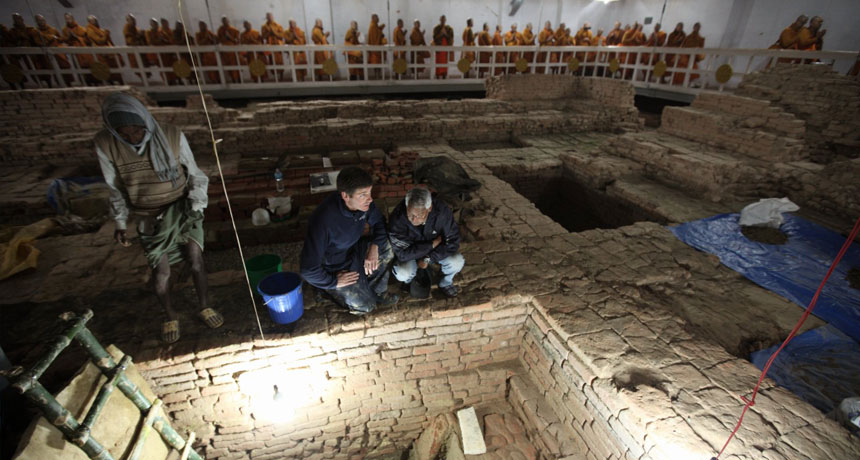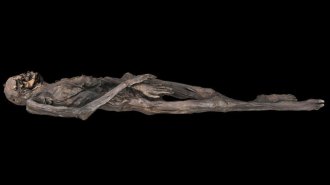Early shrine unearthed at Nepal Buddhist site
Remains of 2,500-year-old wooden structure found beneath temple at Buddha’s birthplace

BUDDHA'S SECRETS Archaeologists working inside Nepal’s Maya Devi Temple direct excavations of what is possibly the earliest known Buddhist shrine while Buddhist monks on a pilgrimage to the site meditate in the background.
Ira Block/National Geographic







